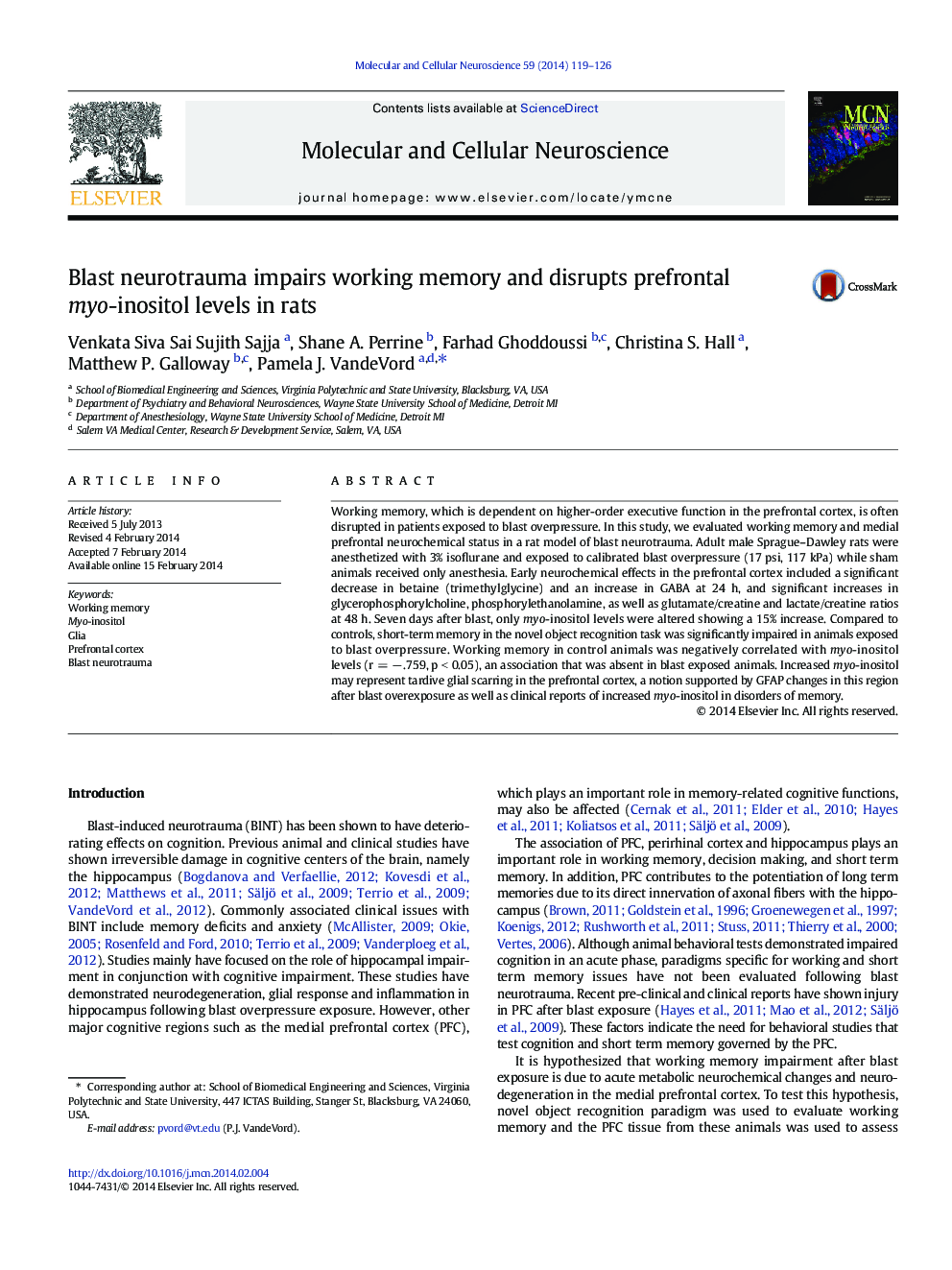| Article ID | Journal | Published Year | Pages | File Type |
|---|---|---|---|---|
| 8478638 | Molecular and Cellular Neuroscience | 2014 | 8 Pages |
Abstract
Working memory, which is dependent on higher-order executive function in the prefrontal cortex, is often disrupted in patients exposed to blast overpressure. In this study, we evaluated working memory and medial prefrontal neurochemical status in a rat model of blast neurotrauma. Adult male Sprague-Dawley rats were anesthetized with 3% isoflurane and exposed to calibrated blast overpressure (17 psi, 117 kPa) while sham animals received only anesthesia. Early neurochemical effects in the prefrontal cortex included a significant decrease in betaine (trimethylglycine) and an increase in GABA at 24 h, and significant increases in glycerophosphorylcholine, phosphorylethanolamine, as well as glutamate/creatine and lactate/creatine ratios at 48 h. Seven days after blast, only myo-inositol levels were altered showing a 15% increase. Compared to controls, short-term memory in the novel object recognition task was significantly impaired in animals exposed to blast overpressure. Working memory in control animals was negatively correlated with myo-inositol levels (r = â .759, p < 0.05), an association that was absent in blast exposed animals. Increased myo-inositol may represent tardive glial scarring in the prefrontal cortex, a notion supported by GFAP changes in this region after blast overexposure as well as clinical reports of increased myo-inositol in disorders of memory.
Related Topics
Life Sciences
Biochemistry, Genetics and Molecular Biology
Cell Biology
Authors
Venkata Siva Sai Sujith Sajja, Shane A. Perrine, Farhad Ghoddoussi, Christina S. Hall, Matthew P. Galloway, Pamela J. VandeVord,
